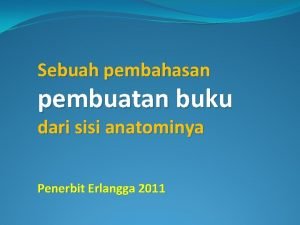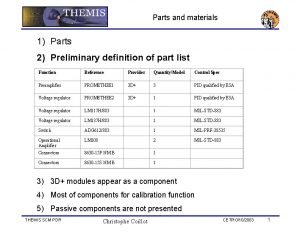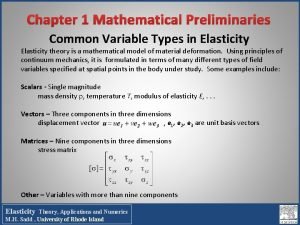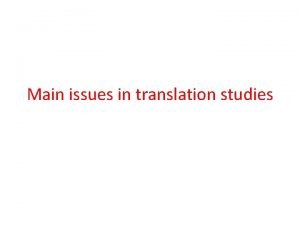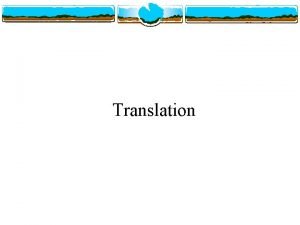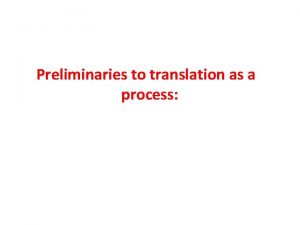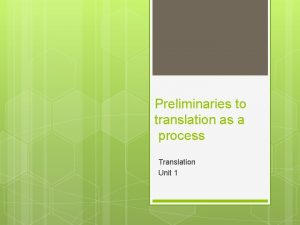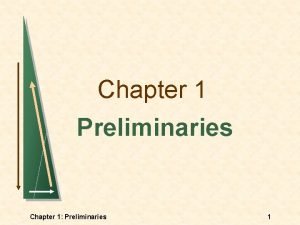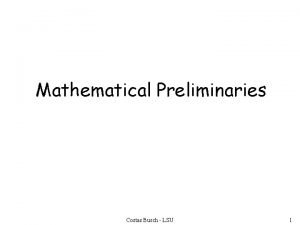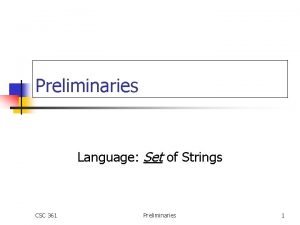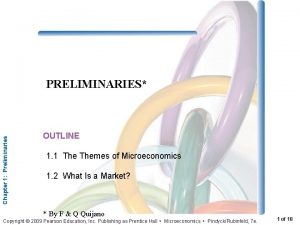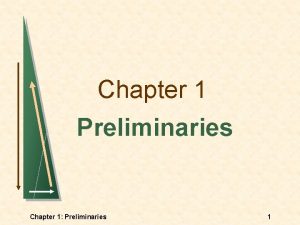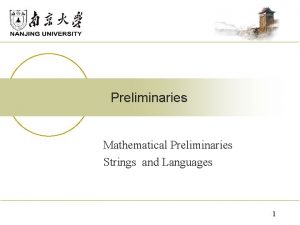Preliminaries to translation as a product Translation can















![[INTERLINEAR Like these things to them demand much now. ] LITERAL The likes of [INTERLINEAR Like these things to them demand much now. ] LITERAL The likes of](https://slidetodoc.com/presentation_image_h2/7df1c0f1e8085c6cc7aafdfc1ffa559b/image-16.jpg)

- Slides: 17

Preliminaries to translation as a product:

Translation can be seen as a process and a product. As a process means what the translator actually does. The evidence we have for a process is a product such as gist translation or exegetic translation.

To look at translation as a product we need to look at two opposed degrees of freedom of translation: extreme SL bias and extreme TL bias Degrees of freedom of translation 1. Interlinear translation: Interlinear translation is at the extreme SL bias. Here the TT does not respect TL grammar, but it has grammatical units corresponding as closely as possible to every grammatical unit of the ST.

Example, ﺍﻟﻠﻲ ﻓﺎﺕ ﻣﺎﺕ The/ What passed died As can be seen from this example, Interlinear translation is used where the purpose of the translation is to shed light on the structure of the ST, e. g. descriptive linguistics and language teaching.

2. Literal translation As a form of ST bias, literal translation focuses on the denotative meaning of the word (out of context). However, in literal translation the TL grammar is respected. Literal translation involves grammatical transposition: the replacement of given parts of speech in the ST by other parts of speech in the TT, e, g. ﺍﻟﺪﻧﻴﺎ ﺷﻤﺲ It’s sunny

Literal translation involves grammatical transposition: the replacement of given parts of speech in the ST by other parts of speech in the TT e. g. It’s sunny ﺍﻟﺪﻧﻴﺎ ﺷﻤﺲ

3. Free translation At the opposite extreme of TL bias. Here there is only global correspondence between the textual units of the ST and those of the TT. For example a possible translation of ﺍﻟﻠﻲ ﻓﺎﺕ ﻣﺎﺕ would be ‘Let bygones be bygones’ Here the grammar is completely different and the metaphor ‘dying ’ is lost.

ﻳﻮﻡ ﻟﻚ ﻭﻳﻮﻡ ﻋﻠﻴﻚ you win some, you lose some Here the grammar and the vocabulary are different.

4. Communicative translation: It is produced when in a given situation the ST uses an ST expression standard for that situation, and the TT uses a TT expression standard for an equivalent target culture situation. For example, Let bygones be bygones is a translation of ﺍﻟﻠﻲ ﻓﺎﺕ ﻣﺎﺕ

This translation (Communicative translation) is in many situations mandatory. This is also true of many culturally conventional formulae that do not invite literal translation such as proverbs, public notices, and conventional clichés.

ﻣﻤﻨﻮﻉ ﺍﻟﺘﺪﺧﻴﻦ No smoking (public notice) ﺿﺮﺏ ﻋﺼﻔﻮﺭﻳﻦ ﺑﺤﺠﺮ ﻭﺍﺣﺪ To kill two birds with one stone(Standard Arabic proverb) ﻻ ﺷﻜﺮ ﻋﻠﻰ ﻭﺍﺟﺐ Don’t mention it (conversational cliché)

From interlinear to free translation In assessing translation freedom, it is useful to situate the TT on a scale between extreme SL bias and extreme TL bias, with notional intermediate points schematized as in the following diagram.

By an idiomizing translation, we mean one that respects the ST message content, but prioritizes TL ‘naturalness’ over faithfulness to ST detail; it will typically use idioms or familiar phonic and rhythmic patterns to give an easy read, even if this means sacrificing nuances of meaning or tone

Note that ‘idiomizing’ is not synonymous with ‘idiomatic’: throughout this course we use the term ‘idiomatic’ to denote what sounds ‘natural’ and ‘normal’ to native speakers – a linguistic expression that is unexceptional and acceptable in a given language in a given context.

The five points on the scale – as well as the rarely used interlinear translation – can be illustrated by the following translations of the phrase ﻣﺜﻞ ﻫﺬﻩ ﺍﻻﺷﻴﺎﺀ ﻋﻠﻴﻬﺎ ﺇﻗﺒﺎﻝ ﻛﺜﻴﺮ ﺍﻵﻦ
![INTERLINEAR Like these things to them demand much now LITERAL The likes of [INTERLINEAR Like these things to them demand much now. ] LITERAL The likes of](https://slidetodoc.com/presentation_image_h2/7df1c0f1e8085c6cc7aafdfc1ffa559b/image-16.jpg)
[INTERLINEAR Like these things to them demand much now. ] LITERAL The likes of these things have much demand now. FAITHFUL Things like these are in great demand now. BALANCED This kind of thing’s in great demand at the moment. IDIOMIZING This type’s all the rage. FREE This one’s dead trendy.

Note that the last four TTs are all idiomatic, but only one of them is an idiomizing translation.
 Apa itu preliminaries
Apa itu preliminaries Preliminary materials
Preliminary materials Halaman preliminaries
Halaman preliminaries Mathematical preliminaries in numerical computing
Mathematical preliminaries in numerical computing Chapter 1 mathematical preliminaries
Chapter 1 mathematical preliminaries Preliminaries synonym
Preliminaries synonym Communicative theory of translation
Communicative theory of translation Number translation using voice translation profiles
Number translation using voice translation profiles Left and right transformations
Left and right transformations 10 noun phrases
10 noun phrases Area restricted theories
Area restricted theories What is the final product of translation?
What is the final product of translation? Product life cycle kotler
Product life cycle kotler Contoh produk sampingan
Contoh produk sampingan What is a firm
What is a firm Product mix and product line
Product mix and product line Core augmented and actual product
Core augmented and actual product Dot vs cross product
Dot vs cross product
